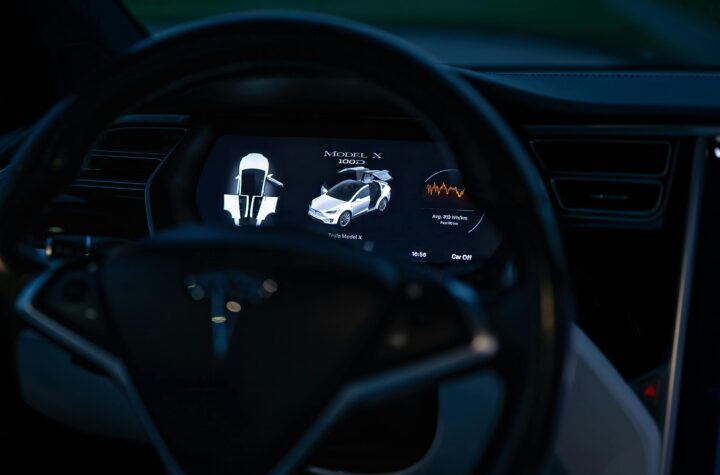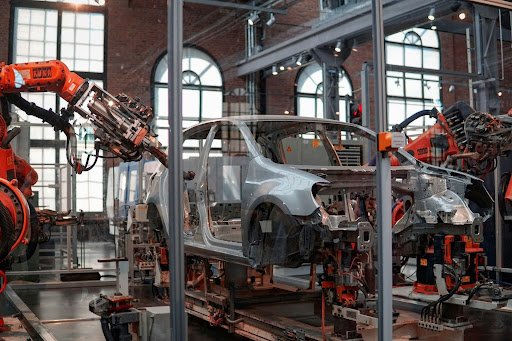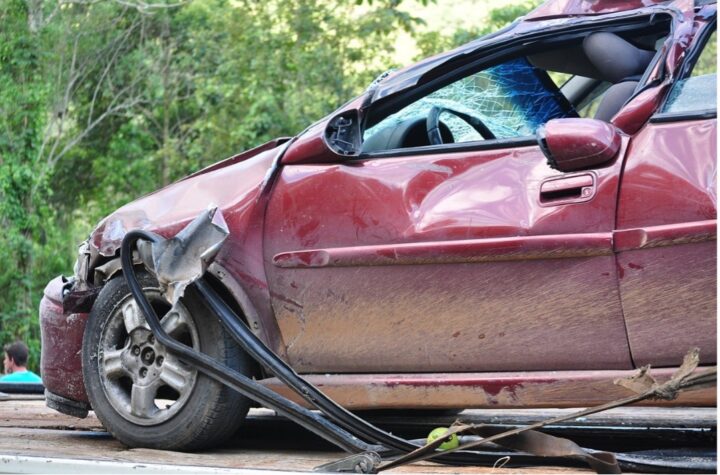
INTERVIEW – OPTIS, a global provider of light simulation solutions, has in the past few months, been strengthening its global presence. For example, the Toulon, France-based company, hired Pete Moorhouse, an expert on automotive interior and exterior design in 2008 to help the company tailor its products and services which are aimed at the automotive industry.
The company opened a wholly-owned subsidiary in May in Tokyo, Japan. The subsidiary, OPTIS Asia & Pacific K.K, is exclusively in charge of the sale of the entire range of OPTIS SAS products and services in Japan. OPTIS Asia & Pacific K.K is already operational and will allow OPTIS to provide a further improved, dedicated assistance to its large customer base, and to strengthen its relationship with its industrial partners.
In September 2008, OPTIS announced that it was expanding its North American sales force to hard-sell its OptisWorks product especially at the especially for the lighting and solar industries. OPTIS, was created in 1989 and quickly became a major supplier of lighting system design to the automobile, aerospace, consumer electronics, defense, optics and lighting industries. The company invests 35 per cent of its revenues in R&D.
OPTIS’ flagship product is its SPEOS software, which has integrated versions within the CATIA V5, SolidWorks and PTCs Pro/Engineer platforms. This software is the first light simulation solution fully integrated inside CAD/CAM software. It is also the first to be fully physics-based. Its solutions allow designers and engineers to analyze and optimize the lighting performance and appearance of products. In 2002, OPTIS integrated its SPEOS solution in CATIA V5 to launch the SPEOS CAAV5 Based solution. Since 1989, the company has delivered more than 5500 licenses to 1200 customers, in more than 36 countries worldwide including major automotive, aerospace, electronics, white goods and lighting manufacturers, as well as universities, research laboratories and defense agencies.
According to OPTIS, automotive exterior and interior lighting, cockpits, mobile phone screens and keypads, LCDs, LEDs, lights, and architectural lighting can all be optimized using the SPEOS technology. “SPEOS integrates photometry, colorimetry, lighting simulation capabilities fully based on physics, into the PLM chain. Its live-measured library of material, sources and sensors brings highly realistic virtual prototypes, giving light information. Its unique eye-vision model provides answers about the perception of a 3D environment such as a human-machine interface, often needed for ergonomy and safety applications. Its unique colorimetry, visual ergonomics, and lighting solutions set a new precedent in digital mockup,” says the company.
OPTIS has a SPEOS variant for windshield analysis. The SPEOS Windshield Analysis allows windshield manufacturers and vehicle manufacturers to check the compatibility of their windshield design with optical standards, to make a static analysis of image distortion through the windshield, and to make video sequences of what will be seen through it while the vehicle is in motion, thus enabling them to validate the windshield’s visual performance. The software is available in both SPEOS stand-alone which is compatible with all CAD programs, and it is also integrated in CATIA V5 from Dassault Systèmes.
“SPEOS Windshield Analysis is an efficient engineering tool for windshield manufacturers and, thanks to its easily interpreted graphic results, Windshield Analysis will help them to explain and justify their designs to car manufacturers quickly. Windshield manufacturers will be able to produce a feasibility study within one hour of receiving the project,” says a press release during the launch of this product.
OPTIS has directly connected its SPEOS CAA V5 Based software to Product Engineering Optimizer or PEO – also part of the CATIA V5 from Dassault Systèmes. For the automotive industry, this meant that the time required to virtually validate headlamps and tail lamps was cut in half by using this optimization tool box. Both automotive as well as aerospace engineers are able to drastically reduce the negative impact of the reflections inside the vehicle and the cockpit.
“Lots of parameters can now be taken into account to automatically find the best configuration out of millions. This was not possible before this powerful PEO connection. For the first time, color can be optimized! For example light sources composed of assemblies of colored LEDs can be automatically piloted, controlled and optimized according to the targeted project specifications. This major innovation also opens a new field never explored until now: the optimization of human perception. Indeed, SPEOS is the only software able to really simulate what a human sees thanks to its unique human eye model included in its SPEOS solution. Not only can perceived quality, visual ergonomics and human vision be simulated but also, for the first time, they can be optimized! This leads the way to the improvement of visual comfort, safety, performance and ergonomics of vehicles, aircrafts, helicopters, buildings, cell phones, LED systems,” said a press release during the launch a few years ago.
Some of the automotive companies who are OPTIS’ customers include Porsche, Audi, Daimler Benz, Visteon, Honda, Continental, PSA, Valeo, Magneti Marelli, Magna, Delphi, Temic and BMW.
Automotive Industries spoke to Jacques Delacour, President and CEO of OPTIS.
AI: What are your plans for expansion in international markets? Which markets have you identified as growth markets for OPTIS?
We recently opened an office in Detroit, to be at the heart of the motor industry. We wanted to be on hand to better serve our customers, among whom are the major automotive manufacturers and suppliers.
Our global development strategy focuses on the markets of USA, Japan, China, India as well as the emerging East European countries. These markets are fast developing and we are seeing demands from companies in need of high performance software to manage their light phenomena, whilst streamlining their design process.
AI: Please tell us how your automotive lighting design simulation solutions and lighting consultancy has helped industry?
They help industry engineers, ergonomists and designers to manage all the light phenomena they meet: whether their design criteria is uniformity, visual signature, reducing size, reducing the number of light sources, visibility, legibility, glare, lack of contrast or several of these…all these aspects of light management can be solved by the software. It goes from diagnosing problems to providing the most efficient solution thanks to its automatic optimization capabilities.
SPEOS leaves designers free to explore further the design issues they are faced with. For example, in the past a designer could try out say 2 new designs in a given time. Our SPEOS suite of solutions allows him to design faster, and more intuitively, so in the same timeframe he can investigate 5 new designs. Thanks to OPTIS he can innovate and solve more complex design issues than before, and faster.
SPEOS also helps designers to handle then integrate new optical technologies such as LED, OLED, and LCD displays. Thanks to our comprehensive components library users can try experiment with technologies before they arrive on the market in a fully virtual environment..
AI: What are some of the future issues that will arise in the areas of automotive lighting design, simulation and prototyping?
The trend is towards efficiency of energy use and materials, as well as waste management.
At the moment we are seeing LED technology increasingly used as it is virtually eternal, less bulky and more versatile than old types of light sources. These LEDs require to be associated with light pipes to guide light from the source to the eye.
In terms of simulation, companies are starting to see the advantage of multi-physical simulation in a unique CAE platform. SPEOS is fully integrated in the industry standard, CATIA V5. This means the CATIA V5 user can, for the first time, manage all light and vision issues in the same environment, and simultaneously study other physical phenomena like thermal, dynamics, vibration
We are entering a new era where the requirement is to review lighting systems and manipulate the effects of light exactly as it is perceived in real life . This is a new step which requires constant innovation in the physical properties of light, materials and environments. OPTIS has led the market in this type of development for 20 years.
AI: Please tell us a little about simulating light and human vision within a virtual reality environment.
Before SPEOS, a user could not hope to have both physically accurate simulation results AND display them in a virtual reality environment. You had to choose : the results were physics based but displayed on a traditional computer screen, or the results were displayed in fully emmersive 3D but they weren’t guaranteed to be fully realistic, because they weren’t based on physical measurements.
Now SPEOS overcomes that shortfall: putting physics-based simulation within a virtual reality environment.
A fully immersive environment gives the engineer an accurate image of how his/her design will be perceived by the end consumer. By taking into account all the material and surface qualities of a product, adding light simulation, and on top of that incorporating a human vision model, the engineer has the ultimate design tool at his fingertips.
AI: Please tell us about OPTIS’ work in scientifically accurate, physics-based simulation.
OPTIS range of industry-proven simulation tools have been continuously developed and improved since the company started in 1989.The software was born out of scientific research, and most of our technical staff are trained optical engineers. The first releases of the software were dedicated to optical simulation for the design of microscopes, telescopes, lasers… Quickly research institutes and defense organization were interested in this new approach. Our models were so accurate that the French Defense Agency awarded us as best technology in 1994.
However my goal was to answer industrial needs seeing optics as a tool to manage light. I quickly saw that manufacturers lacked a user friendly tool to scientifically analyze light in the design of their products, and my goal became to tailor my, until then, scientific software, to cater for their needs.
The resulting software is SPEOS, fully integrated in the PLM chain, using physical data to analyze complex light-material interactions, all within the customers CAD/CAE environment.
Automotive Industries also spoke to Pete Moorhouse, vice-president, sales & marketing, OPTIS.
AI: Tell us about your CAD platform for embedded cockpit designs for both civil and military markets – including infra-red vision.
The legibility of controls and instrumentation alongside the effects of reflection and glare are critical safety issues in aeronautic cockpit design. OPTIS have developed a suite of solutions aimed at simulating the influence of interior and environmental light sources on the flight monitoring equipment and the glass structure of the windshield or canopy of aircraft. Using our unique Visual Ergonomics (VE) software the complete cockpit design can be represented at any time of day or night, in any environmental condition, and at any point on the globe. This high performance simulation provides real time feedback on the legibility of control panels and instruments, the dangerous effects of glare from the sun or moon, and the visual obstructions caused by reflections in the glass.
OPTIS solutions cover not only the visible part of light, but also the ultraviolet and infrared part of the spectrum. The infrared waveband is particularly important as night vision and vision through fog can be enhanced using electronic sensors. These types of sensors can be used to detect “hot spots”, providing an audio or visual alert, and also to initiate an image on a display.
The software has been designed to cover the entire development cycle, from the 3D scene with its spectral properties, sensors ranging from UV to IR, displays and finally the human who will visualize all of this information.
AI: How has your unique simulation with a model of the human eye embedded in the simulation of driving the car changed the way automotive designers work?
The human eye model developed by OPTIS is unique in the software industry and forms the key component to our simulation solutions. The effects of light are important for both safety and perceived quality. The exact way in which an observer sees a scene depends directly on the light hitting the eye. For instance objects will appear differently depending on where the sun is, and differently again under the artificial lighting of a show room. Appearance of colors and reflections change depending on the intensity and color of light particularly when it comes from the side. To handle such phenomena, OPTIS created a human perception model. This was the first time a human sense had ever been modeled and offered inside a software product.
AI: How will simulation software for light and vision within a virtual reality environment develop in the future?
The ability and confidence to make decisions in 3D relies 100% on being able to produce the most realistic image possible, containing physically correct information. The only guarantee of obtaining a true representation of an object is to apply a scientifically correct simulation of the effects of light on that object in conjunction with a highly accurate representation of the human eye itself.
Current projection systems are unable to address the high dynamics of human vision making it a necessity to embed the human eye model in order to obtain true fidelity with reality. The OPTIS approach of applying the optical properties to all materials and light sources within the simulation ensures the ultimate representation of reality. In our continuing pursuit of innovation we are now beginning to offer this level of realism immersed and interactively inside Virtual Reality (VR) centres.
AI: What are some of the new developments OPTIS has created in automotive exterior lighting and detection systems? Please tell us a little about OPTIS’ on-board vision, mirrors and windshield solutions and how industry has reacted to these products.
One of our latest developments in support of the exterior lighting domain has been to introduce a feature known as “3D Textures”. This technology allows the user to apply a 3D microstructure on any design surface of a model, regardless of the complexity of shape. These millions of micro shapes manage light dispersion, uniformity and reflection and can, for example in automotive lighting, create a unique visual signature, not only contributing to the design and branding but also to meet regulations and standards.
Our windshield analysis tools have been developed in close partnership with industrial specialists and play an important role in the simulation of “Head Up Displays” (HUD) and the visual distortion caused by the actual shape of the glass.
Rear view cameras, blind spot analysis and parking assistance sensors can also be accurately simulated whilst interactively checking results against international standards.
Throughout the design process these standards and regulations provide the reference to creating a safe and ergonomic user environment. By integrating these criteria directly inside our applications OPTIS is able to optimize final design and satisfy international safety demands.
AI: How do you factor in real issues such as the distractions of sunglare and visibility of the instrument panel when developing your automotive interior lighting and driver information systems?
OPTIS solutions are unique in that they are based on a physiological model of the human eye. This means they take into account all the light and physical phenomena to give a resulting image precisely as the object or scene would be perceived by the human eye. More than a simple image, the information allows the user to evaluate the probability of detecting objects, and to be able to read the information depending on the size of character, the typography and the color used for the background.
Our Visual Ergonomics application specifically addresses these real issues such as veiling glare, visibility, contrast, blooming, color perception, peripheral vision, and can even take into consideration the age of the driver.












More Stories
Sensor Fusion and the Next Generation of Autonomous Driving Systems
Unique Experiences in Miami: What to Do Off the Beaten Path
The Factors That Impact the Outcome of a Car Accident Claim